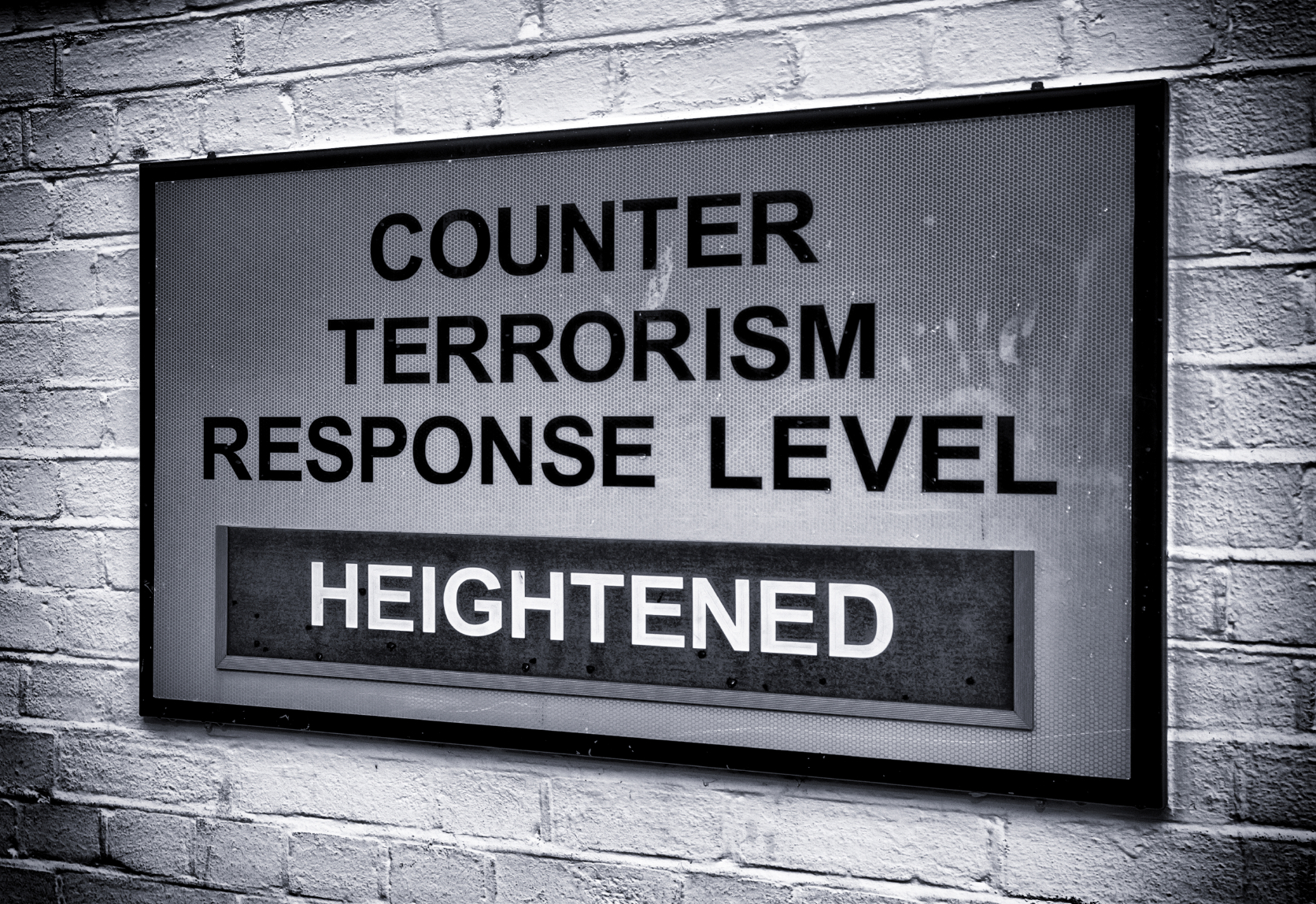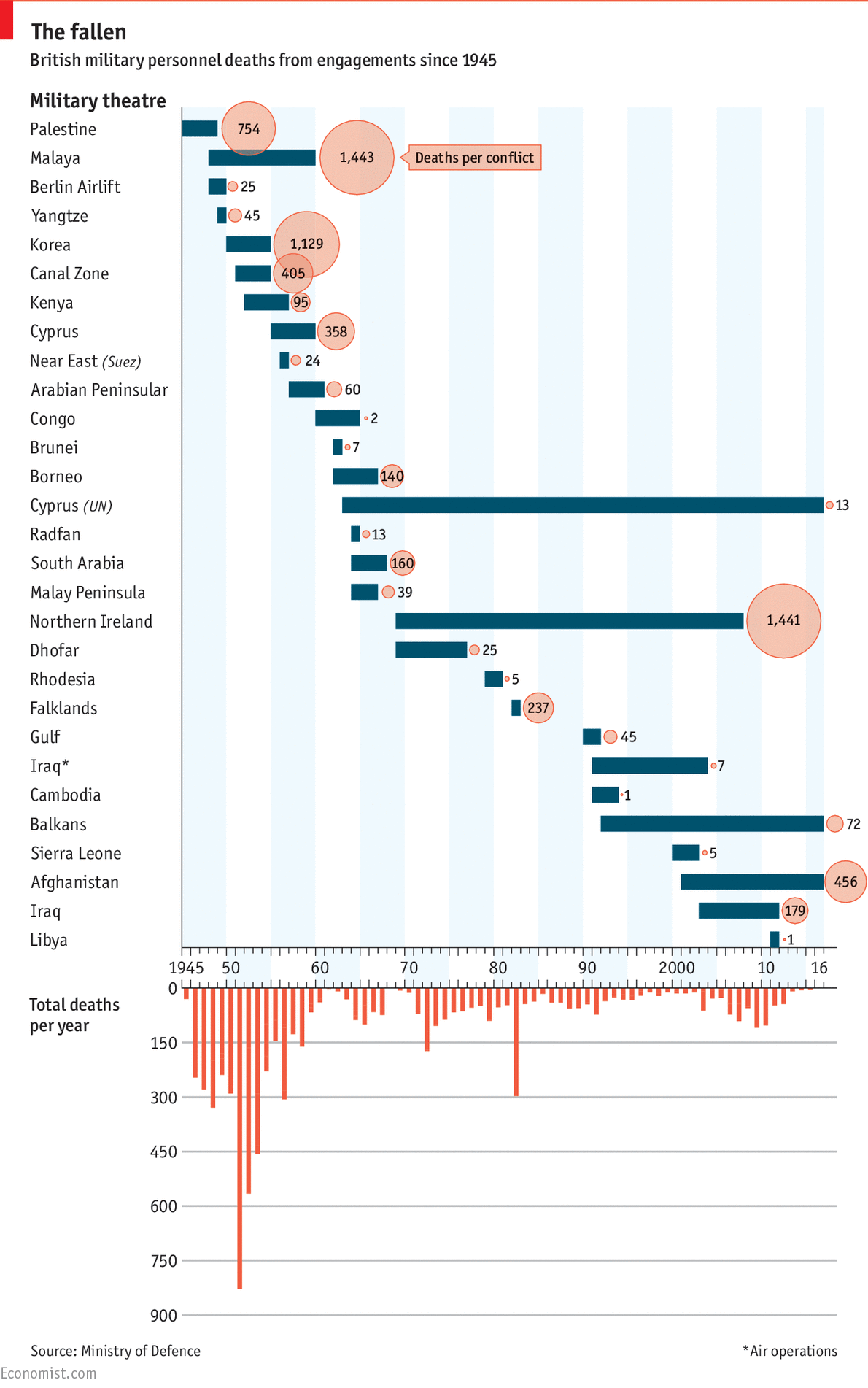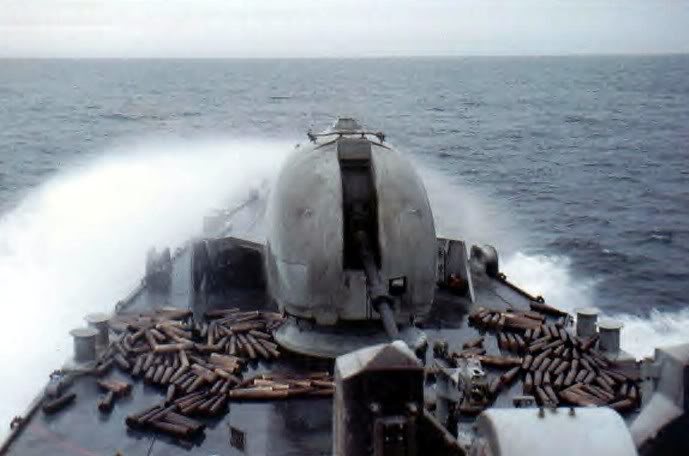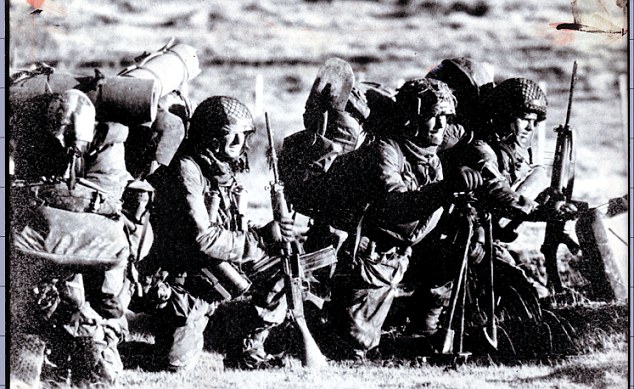
Some people claim 2016 was a dreadful year. Not so for Britain’s military folks, as 2016 one of only two exceptional years in which no British Service man or woman was killed in action since the end of World War Two. The other year was 1968, just before the Northern Ireland campaign got going.
 This graph shows the length of campaigns since World War Two, and the numbers of military people killed fighting them.
This graph shows the length of campaigns since World War Two, and the numbers of military people killed fighting them. It’s not helpful to divide the years by numbers killed as illustrative of intensity, as campaigns can vary greatly across their duration. But it does show the difference between counter-insurgency campaigns, the varying levels of their intensity; and the very much greater intensity of general war.
Malaya “Most Lethal”
Malaya stands out as overall the most lethal campaign since the end of World War Two, but these deaths (1,445) occurred over a 12 year period. Northern Ireland’s Op Banner was the longest – 38 years with 1,441 soldiers killed. The Operation Herrick campaign in Afghanistan lasted 12 years with 404 Service people officially categorised as “killed in action” (with 49 more deaths from illness and other causes).
General War
The Korean War lasted 3 years with 1,129 troops killed, indicating a campaign of several intense battles but long periods of very uncomfortable, dangerous interludes. The Falklands War lasted 6 weeks, with 237 British Service people killed in action.
Lethality and Fire Power
General War is characterised by a balance between the two sides such that both have effective artillery. Counter-terrorist operations are described as “asymmetric” in that the terrorists have very much less military capability. They avoid direct battles, and use bombs and other indirect methods to target civilians, infrastructure and low-risk security force units.
Air power creates further lethality, plus an additional sphere of combat in which air superiority is decided. As we saw in the First Gulf War, whichever side gains air superiority, wins the war.
As the Economist figures make clear, General War is far more dangerous, with more people killed and wounded in intense battles. With far more numerous casualties and the difficulty of evacuating them quickly from the fighting, means that more or the wounded die.
Helicopter casualty evacuation is a feature of counter-terrorist operations – and was developed by the Americans initially in the Korean War – with its very difficult hill terrain; but then to a greater extent in the jungle and asymmetry of the Vietnam War. (The Vietcong called it “the war of the flea” – as in fleas versus the American buffalo).
This requires the making of a further qualification regarding figures from the recent Op Herrick (counter-terrorist operations in Afghanistan). This campaign benefitted from the greatly improved British military medical services that evolved from the unsatisfactory (but thankfully untested) field hospital that deployed to the First Gulf War in 1990-91. This American-style system of frontline-medics, and rapid helicopter evacuation to field hospital, enabled many more seriously injured people to survive wounds that in previous campaigns would have been fatal.
The Falklands War
In the Falklands War neither side achieved air superiority. This very greatly favoured the Argentines who had land airfields within 400 miles on their targets – whereas the British had only two vulnerable aircraft carriers operating ski-jump Harriers with limited range and bomb load capacity.
The Royal Navy swiftly achieved superiority over the Argentine Armada, but throughout the war remained very seriously threatened by the Argentine Airforce, and suffered considerable losses. Royal Navy gunships made a massive contribution to the land battle – at great risk to themselves.

But both sides had effective artillery, so the land battles were hard-fought. The terrain and logistics very much favoured the numerically superior Argentine defenders (over 3:1 in terms of combat troops).

Their sudden collapse is most likely due to the British’ superior use of their small artillery force plus naval gunships. The inexperienced and less-effectively structured Argentine artillery, defending, with huge amounts of ammunition ready to fire, ought nevertheless to have prevailed – but didn’t.
Overall, this very short war was by far the most intense since the end of the Second World War.
Comparing the Falklands War to campaigns of the Second World War is an interesting exercise. My personal view is that the UK battalion 2 Para which fought two full battles in ten days, experienced battle intensities comparable to some of the units that landed at D Day and fought for Caen.

But I think this requires too many caveats to provide many useful comparisons. The greatly increased power of modern munitions is one; as well as the extremely dangerous climate and arduous battlefield conditions of the Falklands.
I just came upon your blog belatedly. I was interested by your reference to the American-style field medicine arrangements in GULF ONE. My father ‘stopped one in Cyrenaica’ (his words) as the 51st Highland Division approached Tripoli in January 1943. In fact, he stopped two. He believed that his life was saved by two things: the recent provision of Surgical Hospitals up forward which prevented his dying of blood loss from his perforated liver, and the introduction of transfusions to stabilise his condition- although it nearly went badly wrong when an orderly missed the vein in his foot and the plasma built up unnoticed in a painful, subcutaneous balloon.
I very much enjoyed Falklands Commando and The Scars of War.
Thanks John. My own father was wounded during the Siege of Tobruk, recovering from three machinegun bullets in the chest before escaping back to Cairo by means of a very long drive south down the escarpment and into the Quatara Depression where the Germans did not go, with a machinegun lorry and water truck. They’d been in desert since before the war, and were navigation experts. The field hospital was in a cave. He never gave us much detail as to the facilities…
Sometime later. That rings a bell. Did they pick up a stray South African on the way?